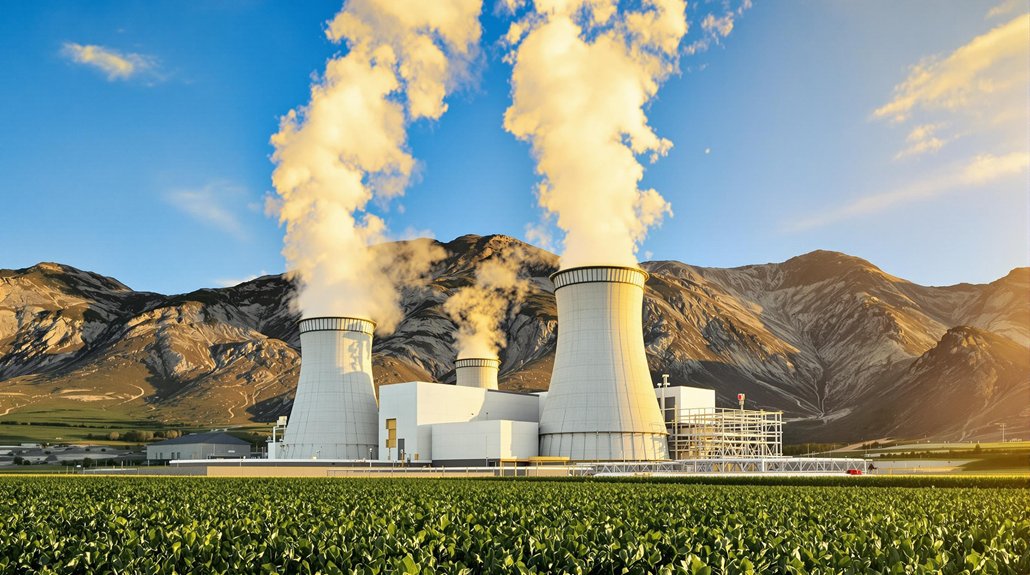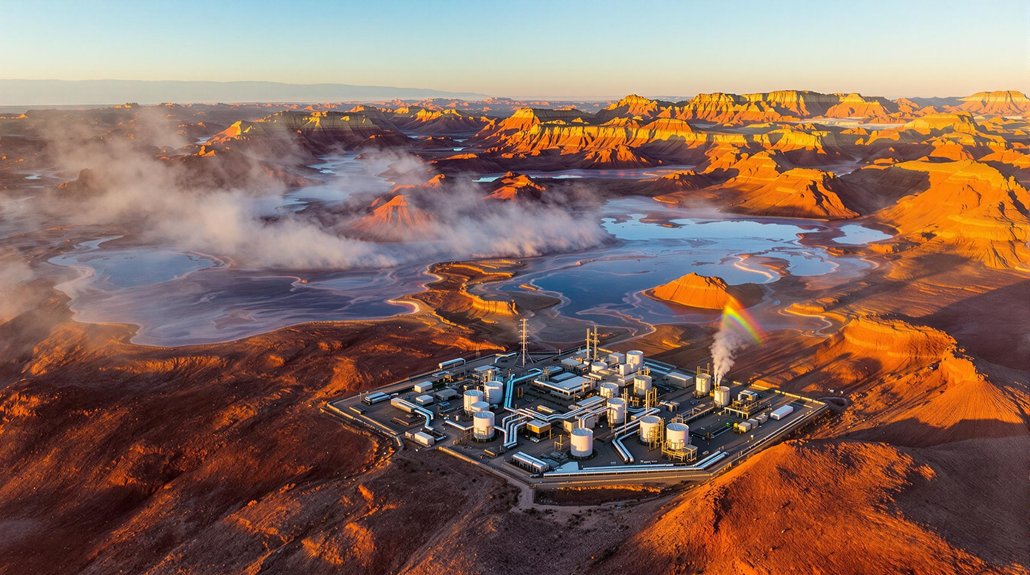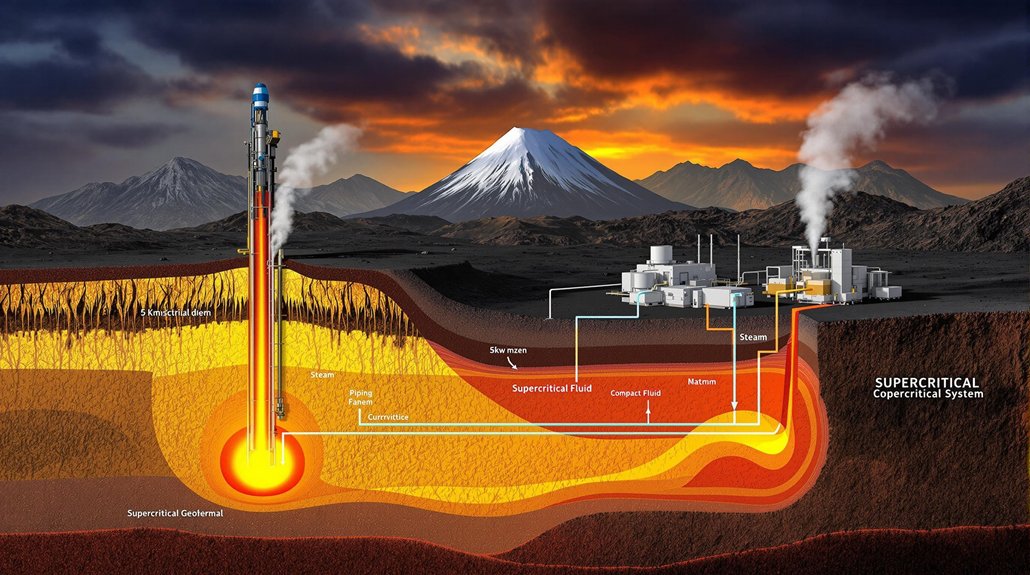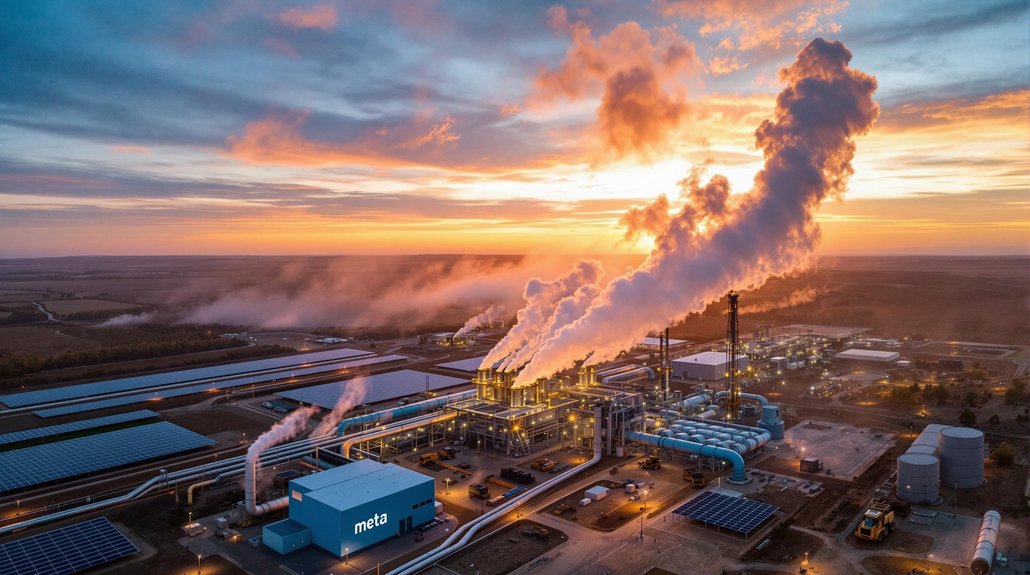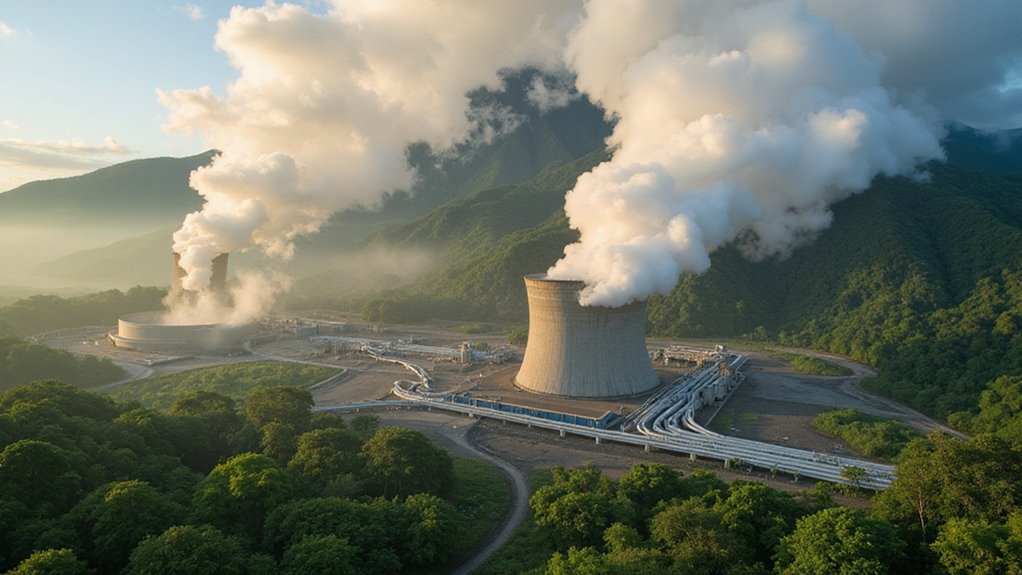Beneath our feet lies an energy goldmine that most people completely ignore. While everyone’s busy gushing over solar panels and wind turbines, geothermal energy quietly outperforms them both. It’s not even close. Geothermal plants achieve capacity factors of 70% or higher, while solar and wind struggle to reach 40%. That means consistent, reliable power—day and night, rain or shine, winter or summer.
Let’s talk dirty for a minute—as in emissions. Geothermal plants emit a measly 0-0.16 kg CO₂ per megawatt-hour. Coal? A whopping 993.82 kg. Natural gas? 469.35 kg. The math isn’t complicated, folks. We’re looking at 97% less sulfur compounds and 99% less CO₂ than fossil fuel plants.
When it comes to emissions, geothermal makes fossil fuels look like dinosaurs—literally and figuratively.
And unlike its flashier renewable cousins, geothermal doesn’t need the sun to shine or the wind to blow. Modern geothermal facilities utilize closed-loop systems to prevent water contamination and minimize environmental impact.
These plants are space-efficient too. While solar and wind farms sprawl across terrains like teenagers in living rooms, geothermal operations maintain a modest footprint. With an impressive 95% availability factor, geothermal energy remains unaffected by external weather conditions unlike other renewable sources. They play nice with farming and other land uses. They don’t kill birds. They don’t make noise. They just sit there, pumping out electricity like it’s their job. Because it is.
The economics make sense too. The initial investment is hefty, sure. But these plants last 30-50+ years with minimal maintenance. The fuel? Free. Forever. Earth’s core isn’t cooling down anytime soon—at least not on human timescales.
Geothermal heat pumps for buildings are ridiculous overachievers, boasting efficiency rates up to 400%. That’s not a typo. They’re four times more efficient than traditional heating systems. With an estimated huge potential between 0.0035 and 2 terawatts compared to our current global energy consumption of 15 terawatts, geothermal energy has room to grow significantly.
References
- https://www.eia.gov/energyexplained/geothermal/geothermal-energy-and-the-environment.php
- https://eplanning.blm.gov/public_projects/nepa/124150/20000784/250000898/20190722_CBD_Kristmannsdottir_-_Environmental_Aspects_of_Geothermal.pdf
- https://geocom.geonardo.com/assets/elearning/8.1.GE vs Environment.pdf
- https://www.ucs.org/resources/environmental-impacts-geothermal-energy
- https://www.twi-global.com/technical-knowledge/faqs/geothermal-energy/pros-and-cons
